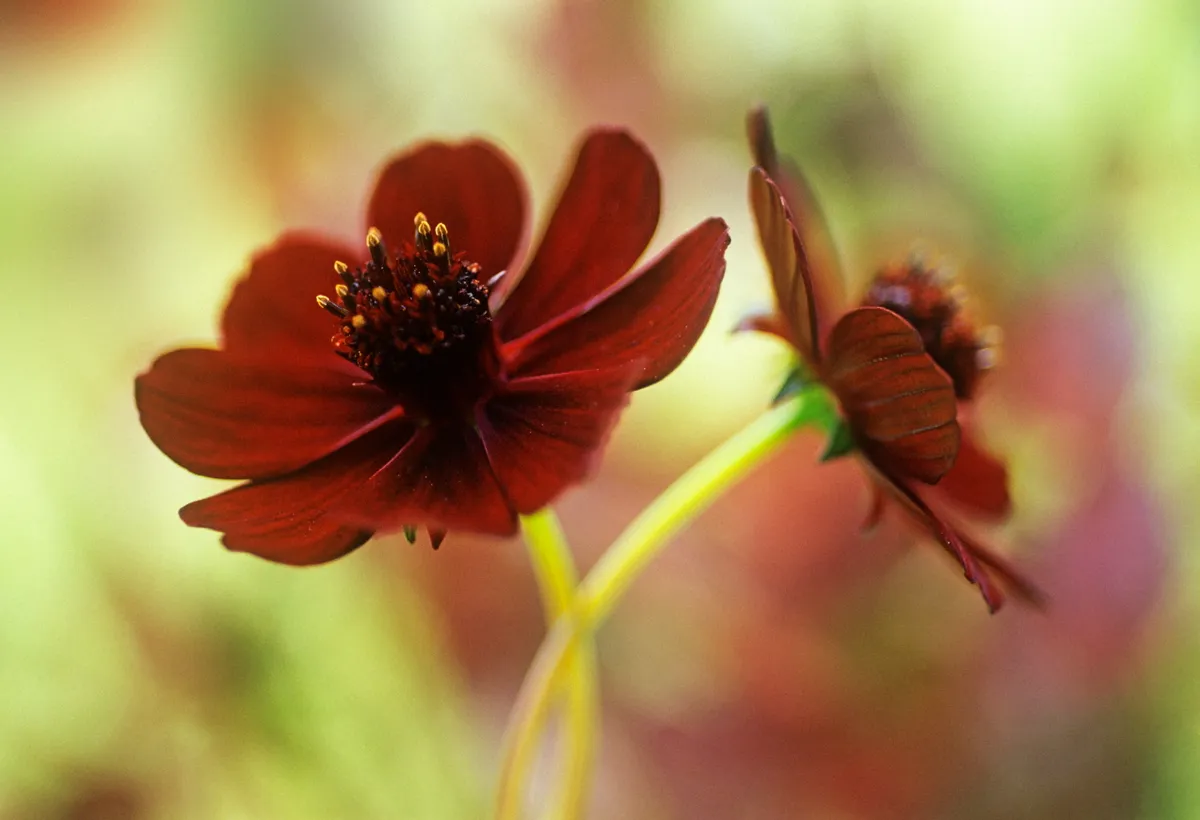September 13 marks Roald Dahl Day, a chance to pay tribute to the writer, who would have been 104 if he had been alive today. In honour of Roald Dahl, here's information on a sweet, chocolate-smelling cosmos, which would have been a perfect fit for the garden of Willy Wonka.
First grown in Britain by Thompson and Morgan in the late 1880s, the chocolate cosmos, Cosmos atrosanguineus, faded from cultivation in the 1940s. Its current popularity stems from Kew receiving it in the late 1970s and distributing it to nurseries. The 4-5cm chocolate-coloured daisies combined with its luscious chocolate fragrance and its perennial, rather than annual, nature soon established its popularity.
The only drawback with this species is that it is self-sterile.

The seed only develops after cross-pollination with a different individual plant – and only the one clone was grown in Britain, so it never set seed. It was propagated by cuttings and tissue culture and has proved a reliable plant for sunny summer containers as well as well-drained, sunny sites where its small, dahlia-like tubers sometimes overwinter.
With individual flowers on long, willowy stems it is also a valuable, if somewhat demure, cut flower.
In recent years, things have changed as new populations in Mexico have been found, seed has been produced and hybrids developed. Chocamocha (= ‘Thomocha’), probably a hybrid, is less rich in colour and scent, while from New Zealand come Dark Secret (=‘3013/01’), Eclipse (=‘Hamcoec’) and Spellbound (=‘Hamcosp’).
Japanese breeders have even succeeded in crossing Cosmos atrosanguineus with Cosmos sulphureus, although the resulting plants have not yet been introduced.
Now, we have come full circle with the introduction of the seed-raised ‘Black Magic’, which, although variable in colour, flower form and size, and intensity of scent, will lead to more impressive seed-raised forms and new hybrids.
Other confectionary-named cosmos
C. bipinnatus ‘Cupcakes White’

Cupped flowers with white petals fused into huge bowls, but with some pink-tinted and split flowers. Alternatively, ‘Cupcakes Mixed’ has a balance of white and pink shades. Voted People’s Favourite by Wisley visitors. 1.2m.
C. bipinnatus ‘Double Click Rose Bonbon’

Double-flowered forms can be disappointing. This is the pick from Wisley because although there were very few doubles, the singles and fluted flowers matched perfectly in colour to create a fascinating, rosy-pink blend. 1.8m.
Cosmos cultivation
In the garden, both Cosmos bipinnatus and Cosmos sulphureus are sun lovers, enjoying fertile but well-drained soil in full sun. Both can be treated like hardy annuals and sown where they are to flower, but sowing outside should be delayed until the middle of May.
Sowing in pots in April, transplanting to individual 7cm pots and then planting outside in late May or June will produce earlier flowers. Space the plants 30-60cm apart, depending on their eventual height.
Support may well be necessary for these plants: smaller cultivars can be supported with brushwood, while taller cultivars need the more solid support of canes and twine. Mildew may prove a problem if the plants are not thinned out or if they are grown in very sheltered situations; free air movement is the best preventative measure in this case.
Both Cosmos bipinnatus and Cosmos sulphureus are good as cut flowers; pick them when the petals are starting to open (but are not fully open) and change the water every day. Cutting or regular deadheading is crucial to maintaining a continuing display of flowers into September and even October.
Cosmos Suppliers
- Chiltern Seeds Crowmarsh Battle Barns, 114 Preston Crowmarsh, Wallingford, Oxfordshire OX10 6SL
- Crocus Online seed and plant supplier
- Mr Fothergill's Gazeley Road, Kentford, Suffolk CB8 7QB
- Plants Of Distinction Church Farm Cottage, The Street, Framsden, Near Stowmarket, Suffolk IP14 6HG
- Thompson & Morgan Online seed and plant supplier
